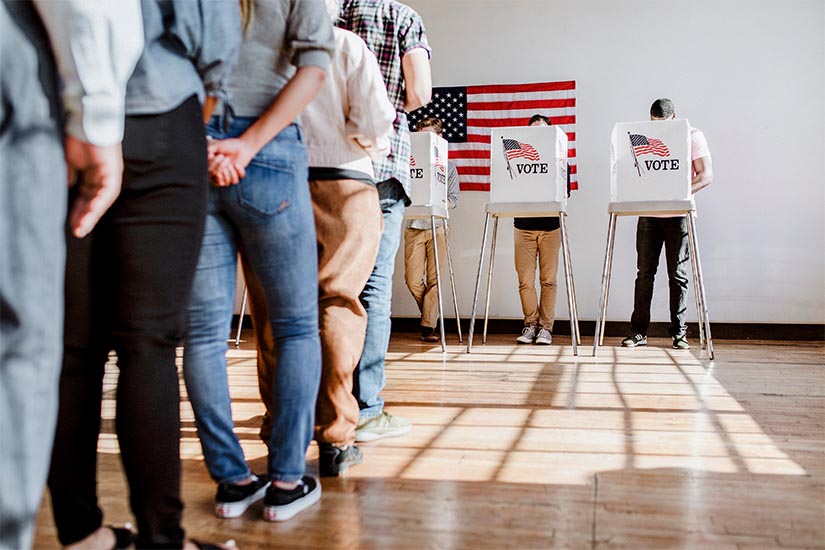The Rose Institute built its reputation early on through its work in legislative redistricting. Over time, the Institute has diversified its research portfolio while maintaining a strong interest in voting and elections. Today, our work in these areas includes redistricting, the California Voting Rights Act (CVRA), direct democracy, and primary election systems.

California Ballot Measures
Video Voter Guides
In 2012, a group of Rose Institute students initiated a project to create short videos explaining California’s statewide ballot measures. The experiment started modestly but clearly had potential. Since then, the Rose Institute has expanded and refined its Video Voter Guide to California's Ballot Measures. We now produce a detailed “Backgrounder” for each California statewide proposition, which includes a deeply researched analysis of the underlying issue, a summary of the proposition’s main terms, a list of supporters and opponents, arguments for and against, a summary of campaign contributions on both sides, and the meaning of a “Yes” or “No” vote. Students prepare these backgrounders, then distill them into scripts and narrate a 2-minute video summarizing each measure. We also include Spanish-language subtitles and produce condensed videos for social media platforms. The project’s goal is to explain California’s ballot propositions in an objective, non-partisan, accessible way. Over the past twelve years, we have produced 67 ballot measure videos. These videos, hosted on the Institute’s website, now also provide an archive of California’s statewide propositions in recent elections.
2025 Video Voter Guide
Ballot Measures Across the U.S.
Miller-Rose Initiative Database
In 2008, the Rose Institute launched the Miller-Rose Initiative Database, which provided the empirical foundation for Miller’s 2009 book, Direct Democracy and the Courts. The database presents information on all statewide initiatives adopted by voters in the United States from the first successful statewide initiative in 1904 through 2024 — in all, more than 1,000 citizen-initiated measures. Users can sort voter-approved initiatives by year, state, subject category, and other variables, and export data in a variety of forms to meet their research needs. The database also provides information on post-election legal challenges to voter-approved initiatives. In the 17 years since the database was established, Rose Institute students have continued to update it by researching new ballot initiatives across the United States and legal challenges to those measures.
Browse the Initiative Database
2024 Overview of Statewide Ballot Measures
In 2024, the Rose Institute expanded its work on ballot measures by publishing a report that summarized national trends in voting on state-level propositions placed on the ballot by legislatures as well as by citizen petition.
California Voting Rights Act (CVRA) and City Council Election Systems
Mapping the Revolution in California City Council Election Systems
In 2025, the Institute published a follow-up report that further documents and maps the transition, titled Mapping the Revolution in California City Council Election Systems (2025).
Quiet Revolution in California Local Government Gains Momentum
In 2016, the Rose Institute published a report titled Quiet Revolution in California Local Government Gains Momentum, which analyzed the accelerating shift in local election systems from at-large to by-district, largely in response to the California Voting Rights Act.
Primary Election Systems
In 2022, the Rose Institute published a detailed Q and A report on California’s Top-Two Primary Election System.
Redistricting
In 2019-2020, the Rose Institute co-sponsored redistricting conferences and webinars to provide public officials and other leaders information about the redistricting process in the run-up to the 2020 decennial census and redistricting cycle.
Webinars: 2020 Census and the New Redistricting Cycle

